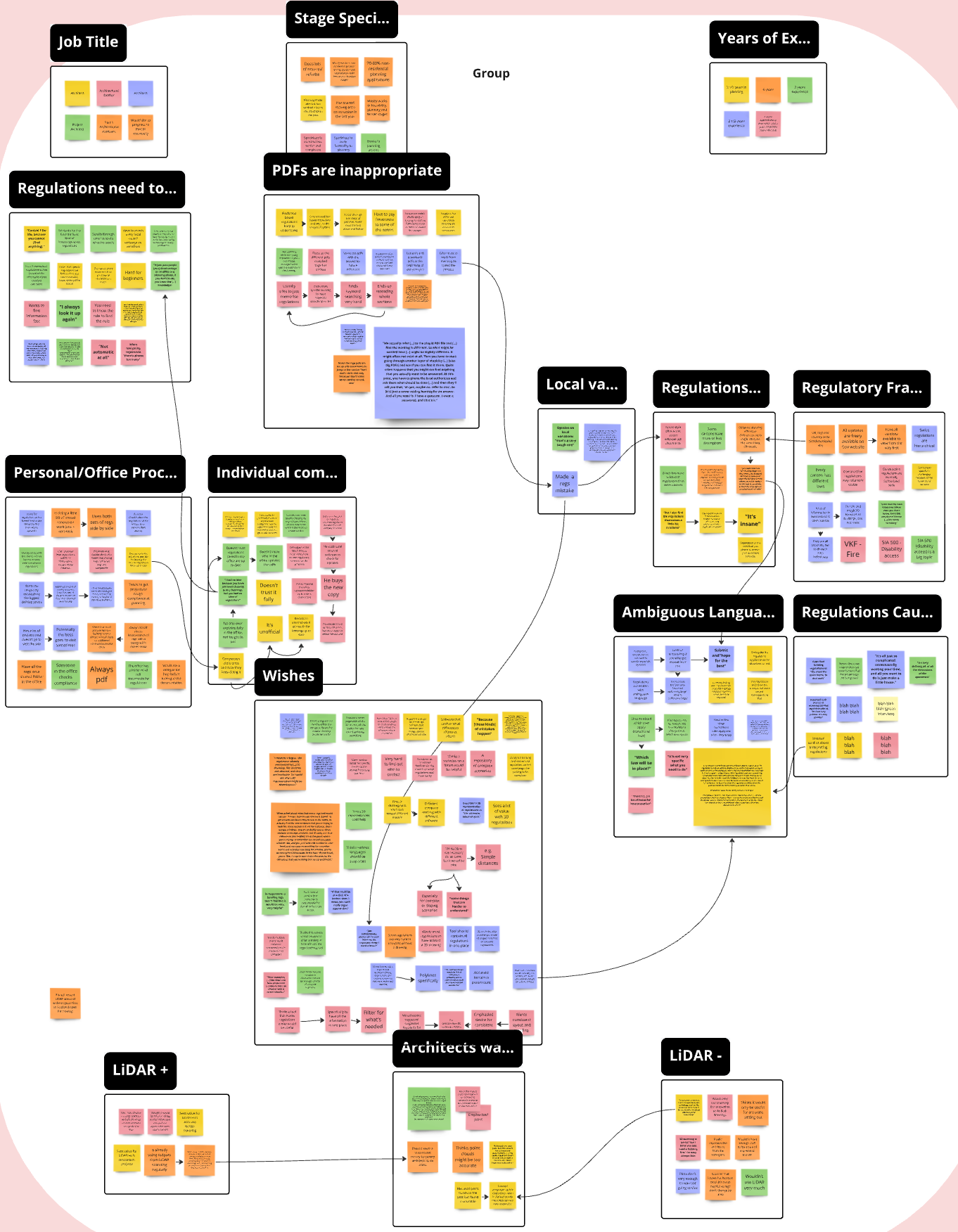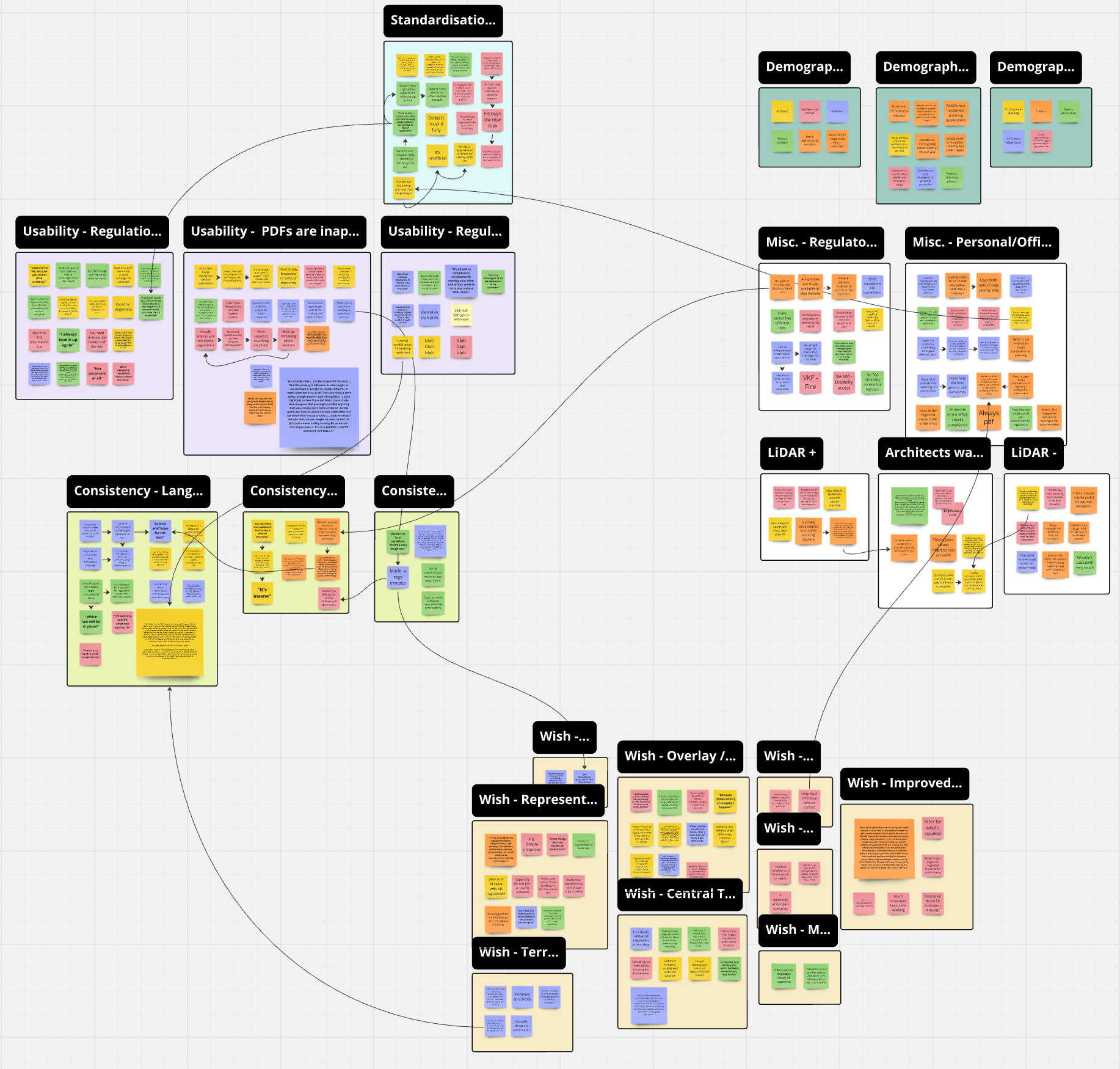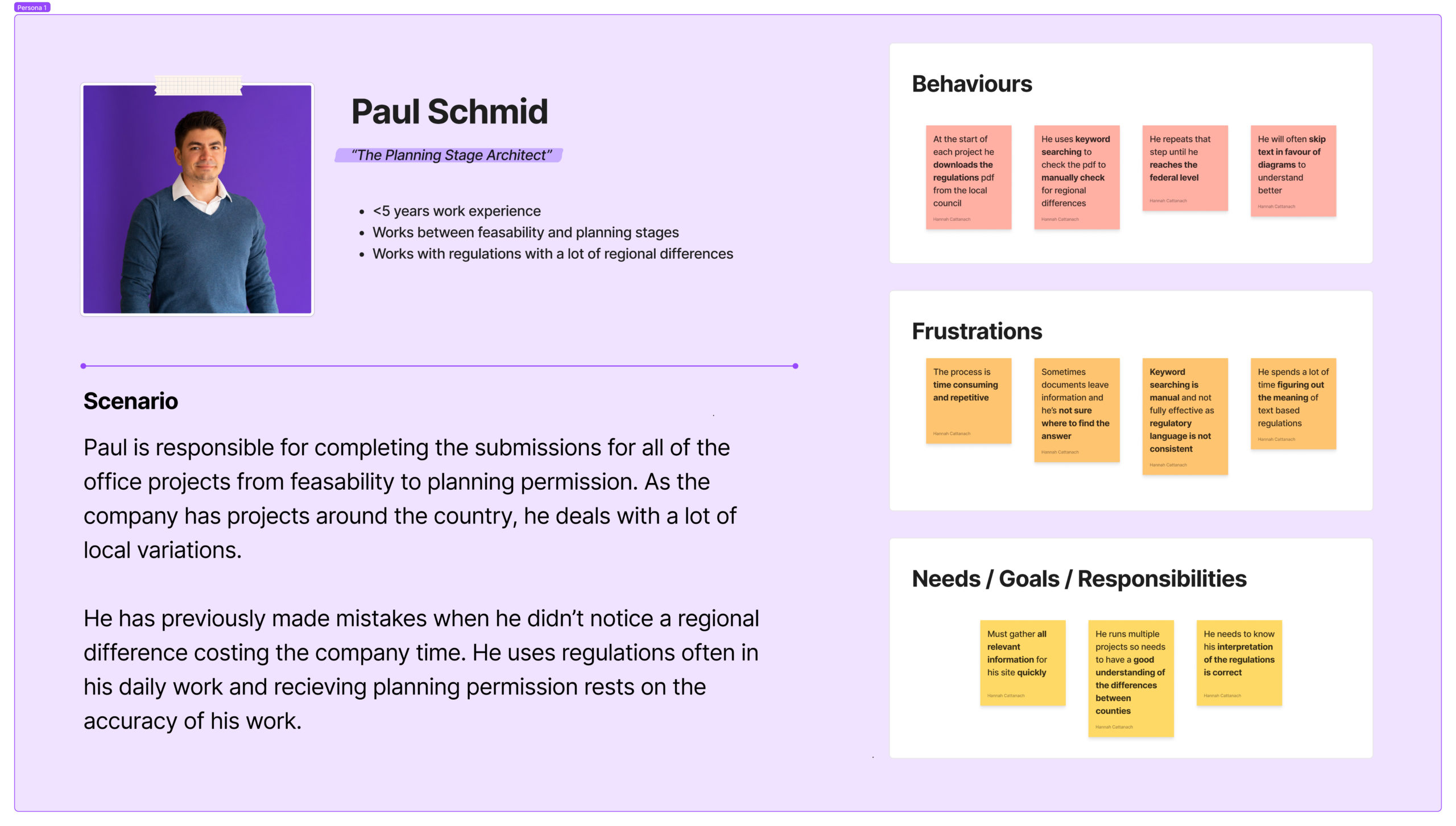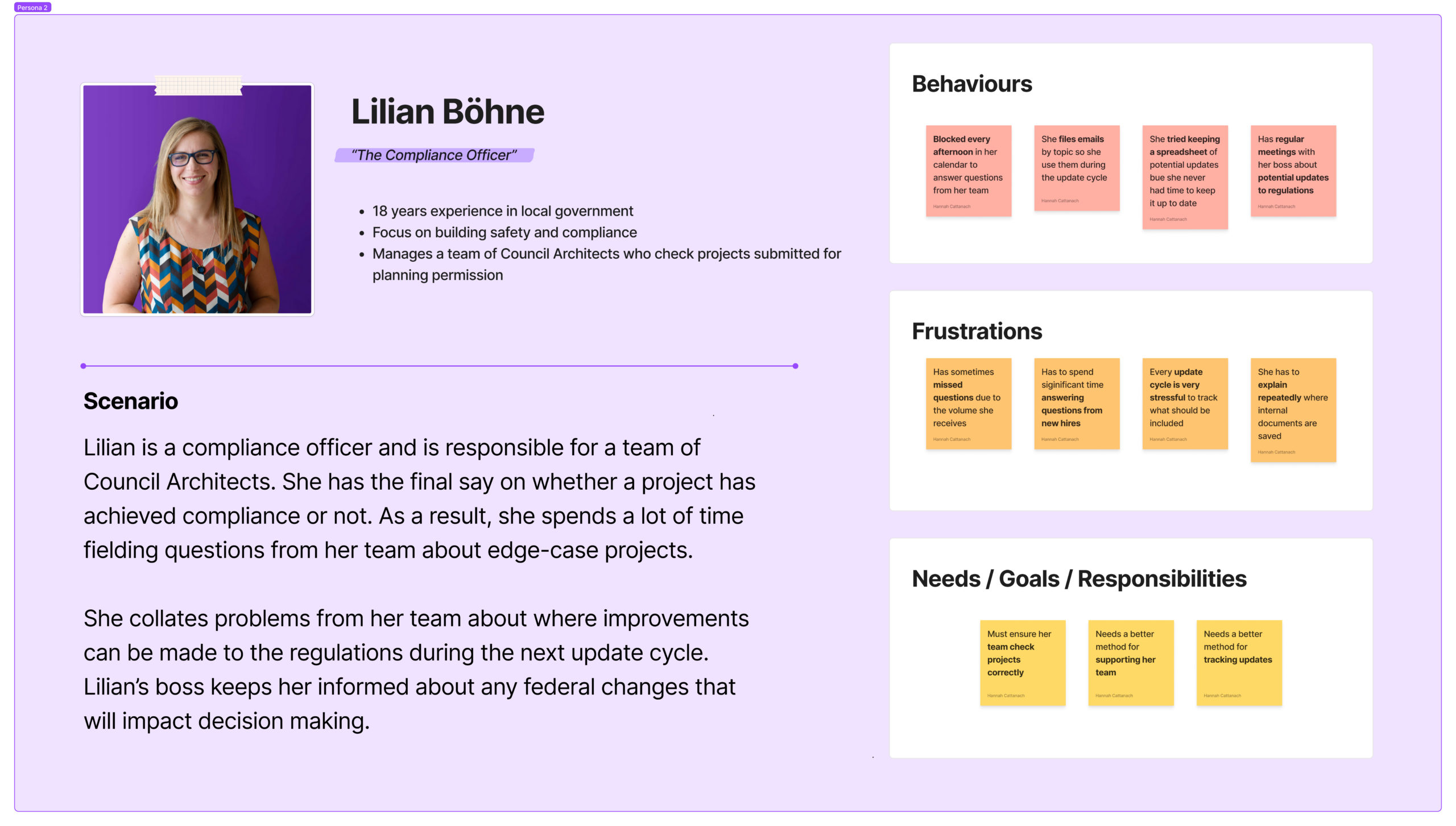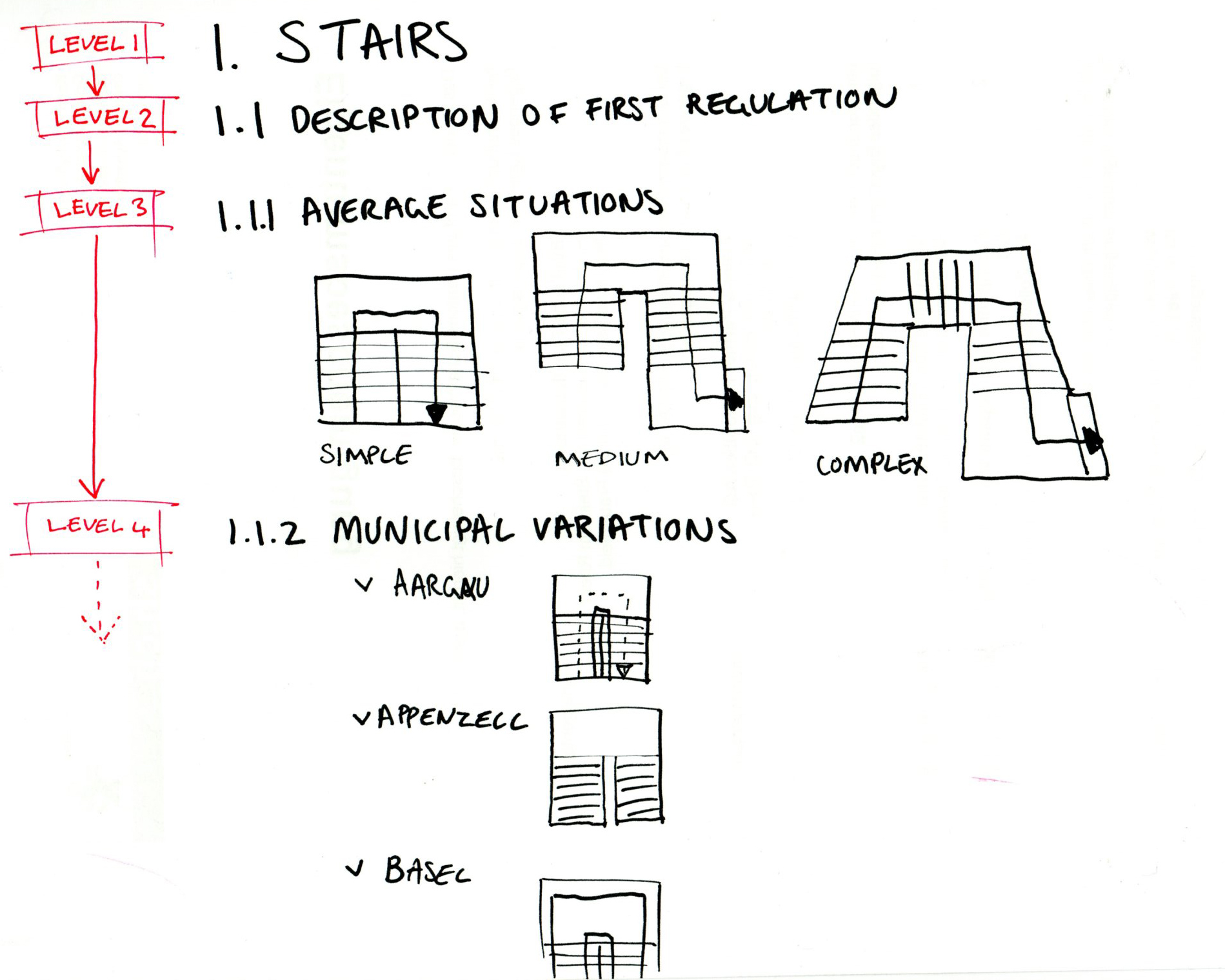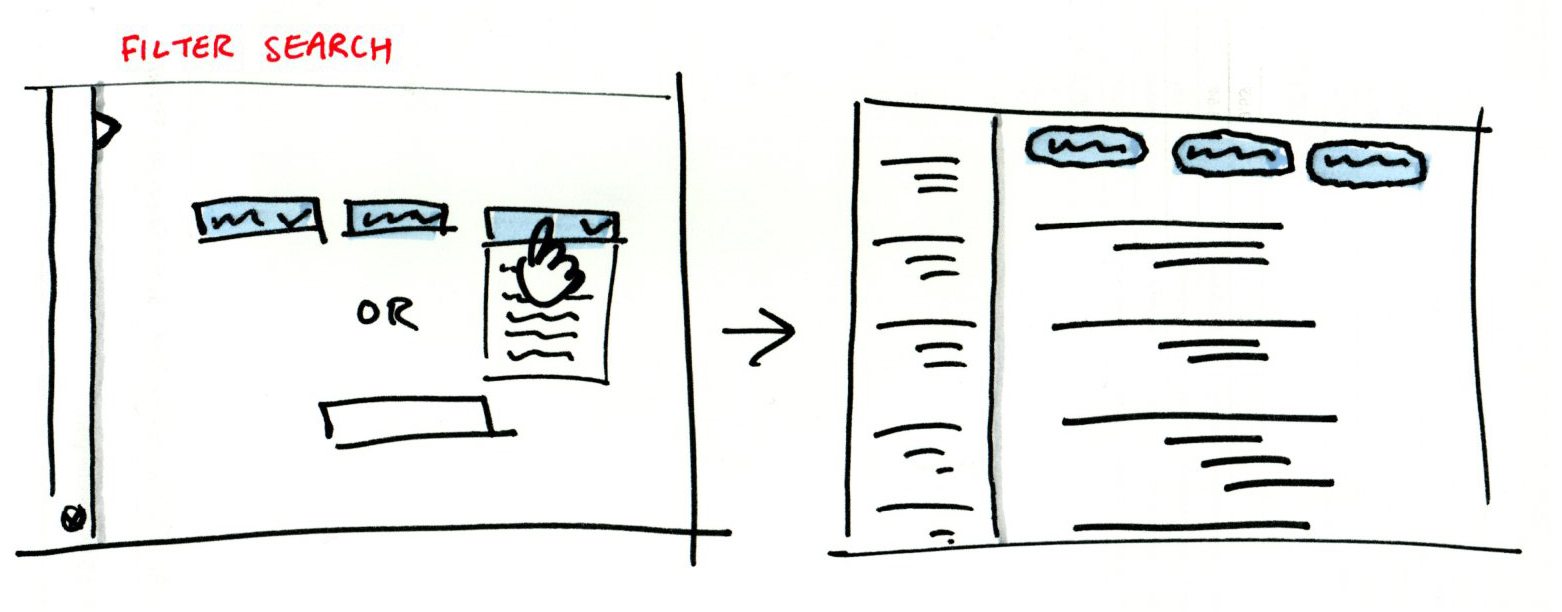
An early sketch on how the user might user filters during the search flow
Swiss Building Regulations Portal (SBRP) Proposal
My role
This was a self-directed research project. I conducted primary and secondary research to inform a robust project proposal that went on to inform my final thesis project.
User Interviews, Surveys, Literature Review, Data Analysis, Documentation and Writing
Results
Over 12 weeks, I researched and wrote a 5000 word project proposal which outlined how I would conduct the design and development project.
Page Navigation
Writing Sample – Introduction
To be honest, there is not much interesting about building regulations. They are tedious to read and complex to understand, but they form the backbone of our homes and public spaces. Irritation at the tedium and a background as an architect in Switzerland led this project down the winding path of building regulation usability.
The research found three main problems with user interaction with building regulations in Switzerland. The first and most significant problem is fragmented documentation. Swiss building regulations are hierarchical, and “as a consequence, each canton arranges the building permit procedure independently” (Kourakou and Glassey 2015: 171). Such a siloed system makes regulatory information hard to find leading to inefficiency and mistakes.
Secondly, finding the correct document or section within a document is extremely difficult, causing users to memorise as much as possible, which leads to mistakes. Content discoverability is generally tricky, as regulations cover many topics (Imrie and Street 2011: 2507; Zallio and Clarkson 2021: 1; Soliman-Junior et al. 2022: 123; HM Government 2023). Each topic has its own PDF, with varying language and individual structure, leaving users unsure where to find information.
Optimising workflow is the third critical problem due to the complexity and length of architecture projects (Schiavi et al. 2022). Regulatory documents are published directly on municipal websites leaving professionals to individually track updates across the 26 Cantons and 2131 municipalities (FSO 2024a). Such a decentralised structure leads to users ‘starting again’ with every project.
Governments have tried improving their online platforms with mixed success and applicability (Stadt Zürich 2021; HM Government 2023). Previous studies have focussed on the usability of eGovernment portals (de Róiste 2013: 447), managing building regulation updates (Thomas-Alvarez and Mahdjoubi 2013: 1), and automated compliance checking (Amor and Dimyadi 2021). However, improving the foundational usability and interaction with the regulations has been consistently overlooked.
Despite research into the usability of government documentation, we need to see more research into solutions to the problems identified with building regulations. This project aims to address the foundational issues surrounding construction compliance, which span the gap between human-computer interaction (HCI), user experience (UX), and building regulations.
This study took a phenomenological approach to understanding the lived experience of built environment (BE) professionals. Semi-structured interviews with architects provided in-depth, descriptive data that explored participants’ habits and perspectives. Secondary research focussed on reading literature surrounding usability challenges and the design of eGovernment services.
In summary, building regulations are part of the daily practice of many BE professionals. Therefore, this project aims to address the foundational usability issues with building regulation documentation. By improving the interaction between user and regulations, this project hopes to bring joy to an otherwise infuriating process.
Reflection
Reflecting on the proposal project, I wish that I had taken more time to assess feedback before implementing it. I placed too much importance on including all feedback and ended up losing site of my initial project goals. Particularly in regards to the project methodology and focus on technology.
Overall, I am happy with the depth and scope of the proposal, especially as towards the end where I refocussed on my original project intention: to improve the interaction between architects and building regulations.
References
AMOR, Robert and Johannes DIMYADI. 2021. ‘The Promise of Automated Compliance Checking’. Developments in the Built Environment 5, 100039.
FSO. 2024. ‘Die 2131 Gemeinden Der Schweiz Am 1.1.2024’. Federal Statistical Office [online]. Available at: https://www.bfs.admin.ch/asset/en/30566928 [accessed 2 Aug 2024].
HM GOVERNMENT. 2023. Building Regulations 2010: The Merged Approved Documents. England: HM Government. Available at: https://assets.publishing.service.gov.uk/media/6408a125d3bf7f25fa417ab7/The_Merged_Approved_Documents_Mar23.pdf [accessed 30 Jun 2024].
IMRIE, Rob and Emma STREET. 2011. Architectural Design and Regulation. John Wiley & Sons.
KOURAKOU, Georgia and Olivier GLASSEY. 2015. ‘Digitalize Building Permits Procedure: Canton of Valais, Switzerland’. In Electronic Government and Electronic Participation. IOS Press, 169–77. Available at: https://ebooks.iospress.nl/doi/10.3233/978-1-61499-570-8-169 [accessed 2 Aug 2024].
DE RÓISTE, Mairéad. 2013. ‘Bringing in the Users: The Role for Usability Evaluation in eGovernment’. Government Information Quarterly 30(4), 441–9.
SCHIAVI, Barbara, Vincent HAVARD, Karim BEDDIAR and David BAUDRY. 2022. ‘BIM Data Flow Architecture with AR/VR Technologies: Use Cases in Architecture, Engineering and Construction’. Automation in Construction 134, 104054.
SOLIMAN-JUNIOR, Joao, Patricia TZORTZOPOULOS and Mike KAGIOGLOU. 2022. ‘Designers’ Perspective on the Use of Automation to Support Regulatory Compliance in Healthcare Building Projects’. CONSTRUCTION MANAGEMENT AND ECONOMICS 40(2), 123–41.
STADT ZÜRICH. 2021. ‘Förderprogramme im Energiebereich – Stadt Zürich’. [online]. Available at: https://www.stadt-zuerich.ch/energie/de/index/foerderung.html [accessed 4 Aug 2024].
THOMAS-ALVAREZ, Natalia and Lamine MAHDJOUBI. 2013. ‘Testing the Effectiveness of a Web-Based Portal System for the Building Control Sector’. Automation in Construction 29, 196–204.
ZALLIO, Matteo and P. John CLARKSON. 2021. ‘Inclusion, Diversity, Equity and Accessibility in the Built Environment: A Study of Architectural Design Practice’. Building and Environment 206, 108352.





